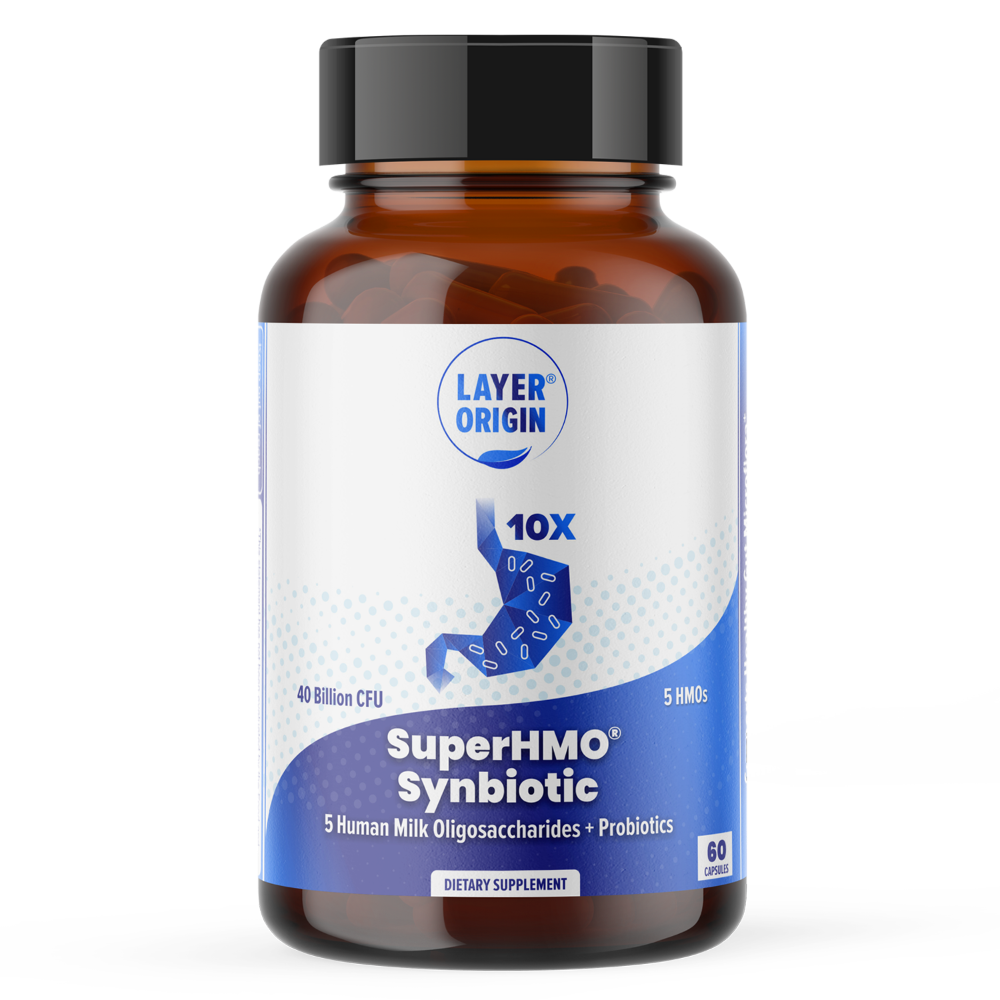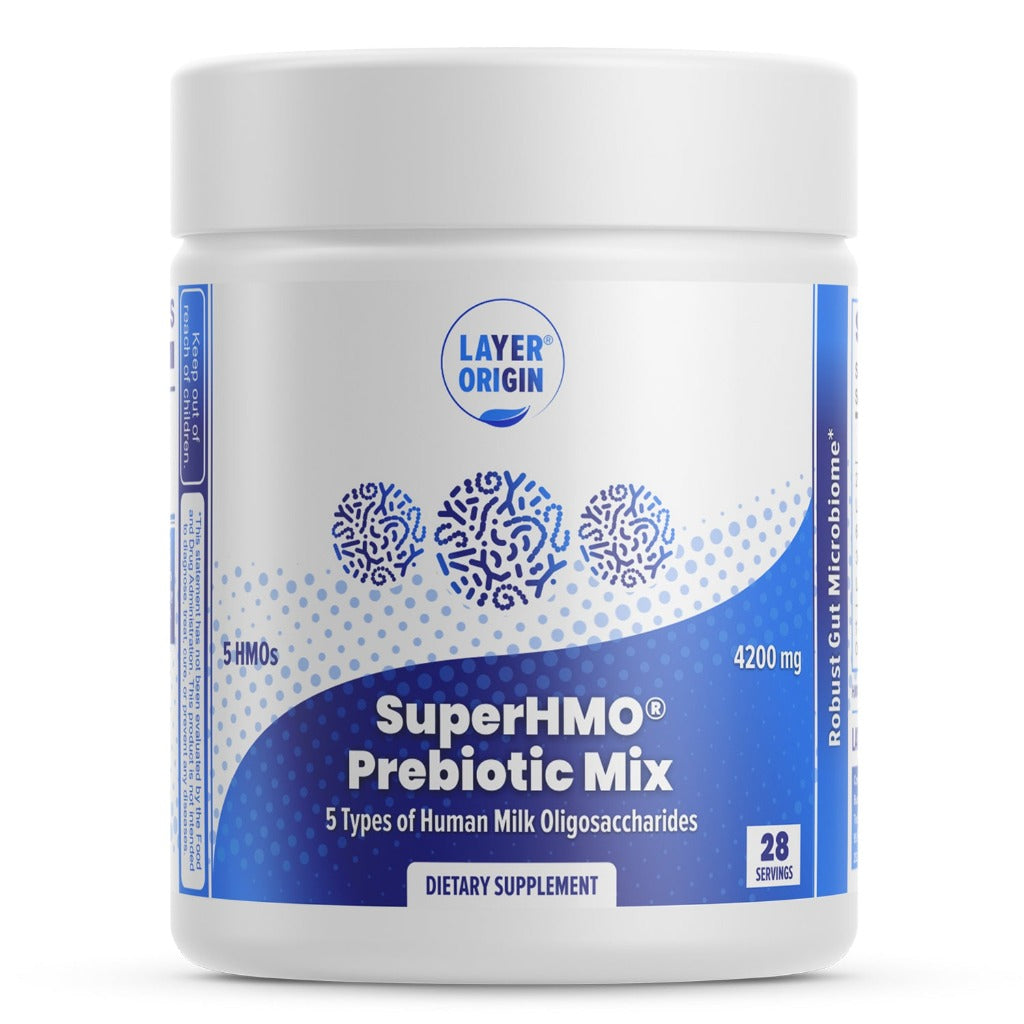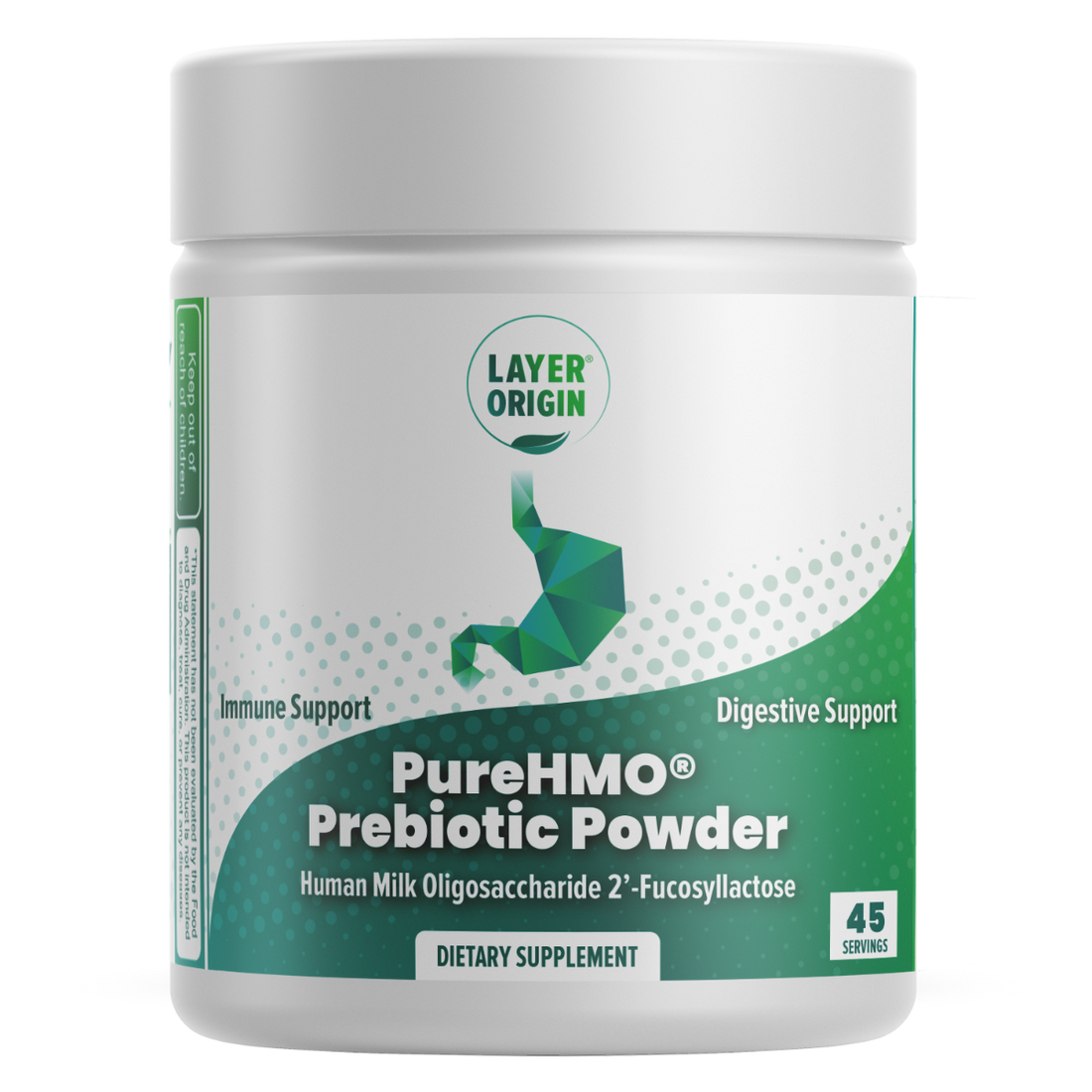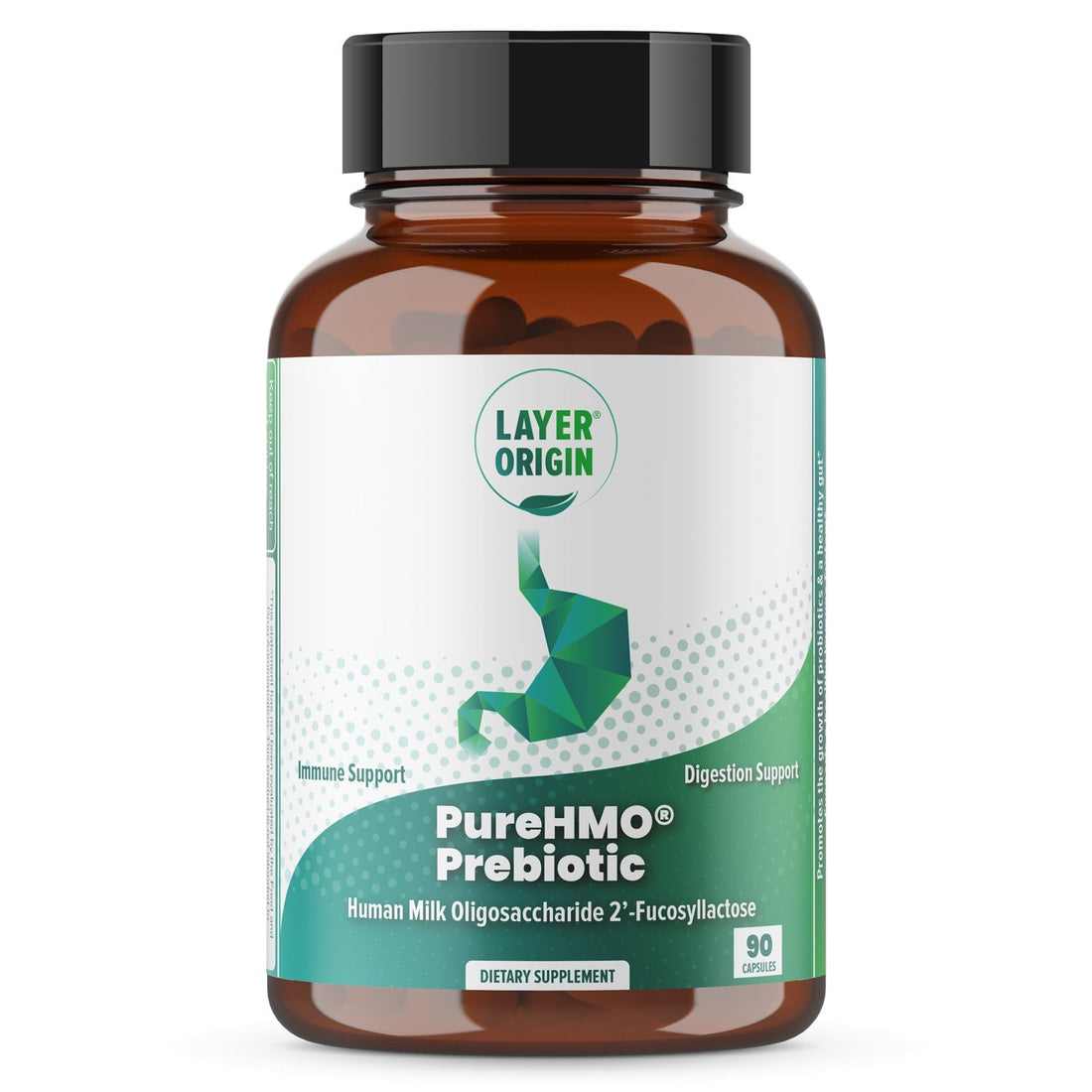Content Outline
- What are Bad Bacteria?
- Spotlight on Bad Bacteria: Key Players in the Gut
- When Healthy Bacteria Cause Issues: The Case of Akkermansia muciniphila
- How to Maintain a Healthy Microbial Balance
- Conclusion
What are Bad Bacteria?
When you think of the gut microbiome, you probably think of a strict divide between ‘good’ and ‘bad’ bacteria, but the difference is more subtle than that.
Instead, it’s more about balance. When your bacteria are balanced, they tip the scales towards health, but an imbalanced microbiome can be detrimental.
Some bacteria are ‘bad’ because they can produce toxins, trigger inflammation, or take up the space that health-promoting species like to occupy. However, these bacteria still exist in healthy individuals, albeit in small amounts, and may even contribute to a healthy ecosystem.
Problems arise when the crowds of ‘bad’ or less than helpful, or potentially pathogenic microbes become too large, usually because of a poor diet, antibiotic use, or even stress. If this is allowed to happen, and the ‘bad’ bacteria grow in numbers, it can lead to an imbalance known as dysbiosis.
What is Dysbiosis?
Dysbiosis is an unbalanced microbiome. That could be in the microbiomes of your skin, mouth, or anywhere on or in the body that bacteria live. Here, we’re specifically talking about gut dysbiosis.
The composition of the gut microbiome is unique to the individual, so there are no general bacteria levels or specific criteria to define dysbiosis. When ‘good’ and ‘bad’ bacteria are balanced, it’s called eubiosis, but when this balance is disrupted, it’s termed dysbiosis.
Dysbiosis can occur because of three main factors:
- A loss of good bacteria
- An overabundance of bad bacteria
- A reduced or lack of bacterial diversity
And there are several factors which can contribute to an imbalanced gut microbiota, including:
- the Western diet
- genes
- antibiotic use
- lack of fiber in the diet[i]
Signs You Might Have Dysbiosis
Gut dysbiosis causes many symptoms affecting the digestive system, skin, and mood.
Table 1. Examples of some of the symptoms of gut dysbiosis.
|
Digestive |
Skin |
Mood |
|
|
|
Dysbiosis has been identified in several chronic health issues that affect the gastrointestinal system, cognition, mood, neurology, and metabolism. It is a complex condition, but the balance can be restored through various interventions.
Spotlight on Bad Bacteria: Key Players in the Gut
The gut is home to various bacteria, some of which can be harmful when their numbers rise above a healthy threshold. While these bacteria can have small roles in digestion or microbial balance, their growth can lead to infections, inflammation, and other health issues. Below are some of the key bacterial species that can disrupt gut health when not kept in check.
Clostridium perfringens
Function in the gut: Clostridium perfringens is an anaerobic gram-positive spore-forming bacteria commonly found in low levels in the gut without causing any harm[ii]. However, when it multiplies too much, it can produce toxins that lead to:
- gas
- bloating
- diarrhoea
- food poisoning
- enteritis
Healthy range: It is estimated that healthy individuals carry less than 105 cfu/g in their feces[i]. Usually, a C. perfringens level above 106 indicates acute food poisoning caused by this bacterium.
Staphylococcus
Function in the gut: Staphylococcus species such as Staphylococcus aureus are well known for causing skin infections, but they can also exist in your gut. In small amounts, this bacterium is relatively harmless, but when overgrowth or the gut barrier’s integrity is compromised it can cause:
- hospital-acquired infections e.g. MRSA
- food poisoning
- diarrhoea
- inflammatory bowel disease
S. aureus is an opportunistic pathogen and its ability to cross into the bloodstream depends on the gut barrier function. If the integrity of the gut barrier is weakened, like in leaky gut syndrome, S. aureus can cross into the blood and wreak havoc[ii].
Healthy range: S. aureus is carried in the colon of around one-third of the human population at any one time and causes no symptoms[iii].
Escherichia coli (E.coli)
There isn’t just one type of E. coli, there are over 700 serotypes. Most varieties of E.coli are harmless, some cause brief spells of diarrhoea, while others can result in more severe symptoms, like bloody diarrhoea and vomiting.
Healthy range: E.coli usually represents less than 0.1% of the human gut microbiota[iv].
Helicobacter pylori
Although not everyone has H. Pylori in their gut, more than half the world’s population do, and it colonises their gut mucosa. In around 80 to 90% of people, H. Pylori doesn’t cause any issues, but in around 15% it can lead to stomach or duodenal ulcers[v].
Healthy range: Best if there is no H. Pylori in your gut, but it exists in more than 50% of the world’s population, and only causes symptoms in a small subset of individuals[vi].
When Healthy Bacteria Cause Issues: The Case of Akkermansia muciniphila
Akkermansia muciniphila is widely recognised as a health-promoting bacteria because of its important role in maintaining the integrity of the gut barrier and supporting metabolic health. For example, it regulates mucus production, promoting a strong lining that stops toxins, pathogenic bacteria, and other harmful substances from crossing into the bloodstream.
However, if your levels of A. muciniphila become too high, it can lead to the protective mucus layer in the gut becoming excessively thin, resulting in increased gut permeability, also known as a leaky gut. This can give rise to chronic inflammation and an increased risk of developing autoimmune and metabolic disorders.
How to bring Akkermansia into a healthy range
To bring Akkermansia levels back into a healthy range, making some simple dietary adjustments and lifestyle changes can be helpful, including:
- consuming a balanced diet rich in fiber (fruit, vegetables, wholegrains) to support diversity and regulate bacterial populations
- having a moderate intake of polyphenol-rich foods like berries, green tea, fruit, and vegetables as these can support Akkermansia growth
- incorporating probiotics and prebiotics into your diet to support gut barrier diversity and the composition and diversity of the gut microbiome
- keeping stress to a minimum
- avoiding excessive or unnecessary antibiotic use to promote a stable gut environment and prevent disruptions in bacterial populations
If your Akkermansia levels are currently too high, you can try:
- lowering your intake of polyphenol-rich foods
- limit your intake of high-fat or ketogenic diets that have been associated with increased Akkermansia growth
- focusing on a balanced diet with adequate protein and fiber from a range of sources to promote overall diversity
- considering a gut microbiome test to monitor bacteria levels and make personalized lifestyle changes
Healthy range: Despite only being discovered within the last 20 years, A. muciniphila is one of the most prominent bacterial species in the human gut, accounting for 0.5 to 5% of the total bacteria population[vii].
How to Maintain a Healthy Microbial Balance
Keeping your gut microbiome balanced is key to avoiding dysbiosis and keeping opportunistic pathogens in low numbers. Some of the things you can do to promote balance are shown in the table below.
| Factor | Component | How It Can Help | Examples |
|---|---|---|---|
| Diet | Fiber | Nourishes beneficial bacteria in the gut. | Fruits, vegetables, legumes, whole grains |
| Sugar | Limiting refined sugars and processed foods helps maintain a healthy microbial balance. | White sugar, processed meats, cakes, biscuits, pastries, sweets | |
| Supplements | Prebiotics | Nourishes good bacteria, promoting the production of beneficial compounds (e.g., short-chain fatty acids). | PureHMO® Prebiotic Powder, SuperHMO® Prebiotic Mix |
| Probiotics | Introduces live beneficial bacteria to help restore gut balance. | Fermented foods (kefir, kimchi, sauerkraut), probiotic supplements | |
| Synbiotics | Combines pre- and probiotics to work together synergistically for gut health. | Specialized synbiotic formulations (e.g., products including Akkermansia, PureHMO® IBS Support) | |
| Medication | Antibiotics | Limiting unnecessary use helps prevent the disruption of both good and bad bacteria. | Penicillin, amoxicillin, flucloxacillin, metronidazole |
| Lifestyle Factors | Exercise | Regular physical activity promotes the abundance of healthy bacteria. | Brisk walking, jogging, dancing, team sports, swimming, cycling, resistance training |
| Stress Management | Managing stress is vital for keeping the gut microbiome in balance and preventing overgrowth of harmful microbes. | Yoga, Pilates, breathing exercises, mindfulness | |
| Sleep | Adequate sleep prevents dysbiosis, inflammation, and weight gain. | Maintaining a consistent sleep schedule; ensuring your sleep environment is cool, quiet, and dark |
Conclusion
Maintaining a balanced gut microbiome is key to supporting not only your digestive health but also your overall health and wellbeing. Even though the presence of bad bacteria isn’t necessarily harmful, overgrowth or allowing it to cross into the blood circulation can lead to several health problems. However, there are many things you can do to help keep your microbiota in check.
Understanding the roles and abundance of bad bacteria like Clostridium perfringens, Staphylococcus, E. coli, and Helicobacter pylori, as well as the potential pitfalls of overabundant beneficial bacteria like Akkermansia muciniphila, means you can proactively support your gut health and ensure everything is in balance.
Written by: Leanne Edermaniger, M.Sc. Leanne is a professional science writer who specializes in human health and enjoys writing about all things related to the gut microbiome.
Sources
[i] Nagpal R, Ogata K, Tsuji H, Matsuda K, Takahashi T, Nomoto K, et al. Sensitive quantification of clostridium perfringens in human feces by quantitative real-time PCR targeting alpha-toxin and enterotoxin genes. BMC Microbiology. 2015 Oct 19;15(1). doi:10.1186/s12866-015-0561-
[ii] Mergani A, Wanes D, Schecker N, Branitzki-Heinemann K, Naim HY, von Köckritz-Blickwede M. Staphylococcus aureus Infection Influences the Function of Intestinal Cells by Altering the Lipid Raft-Dependent Sorting of Sucrase-Isomaltase. Front Cell Dev Biol. 2021 Aug 13;9:699970. doi: 10.3389/fcell.2021.699970. PMID: 34490251; PMCID: PMC8418112.
[iii] Raineri EJ, Maaß S, Wang M, Brushett S, Palma Medina LM, Sampol Escandell N, et al. Staphylococcus aureus populations from the gut and the blood are not distinguished by virulence traits—a critical role of host Barrier Integrity. Microbiome. 2022 Dec 26;10(1). doi:10.1186/s40168-022-01419-4
[iv] Al-Zyoud W, Nasereddin A, Aljarajrah H, Saket M. Culturable gut bacteria lack Escherichia coli in children with phenylketonuria. New Microbes New Infect. 2019 Oct 25;32:100616. doi: 10.1016/j.nmni.2019.100616. PMID: 31763047; PMCID: PMC6859276.
[v] Abadi AT, Ierardi E, Lee YY. Why do we still have Helicobacter Pylori in our Stomachs? Malays J Med Sci. 2015 Sep;22(5):70-75. PMID: 28239271; PMCID: PMC5295741.
[vi] Salama NR, Hartung ML, Müller A. Life in the human stomach: Persistence strategies of the bacterial pathogen Helicobacter pylori. Nature Reviews Microbiology. 2013 May 8;11(6):385–99. doi:10.1038/nrmicro3016
[vii] Khalili L, Park G, Nagpal R, Salazar G. The role of Akkermansia muciniphila on improving gut and metabolic health modulation: A meta-analysis of Preclinical Mouse Model Studies. Microorganisms. 2024 Aug 9;12(8):1627. doi:10.3390/microorganisms12081627
[i] Yao PY, Annamaraju P. Clostridium perfringens Infection. [Updated 2023 Aug 8]. In: StatPearls [Internet]. Treasure Island (FL): StatPearls Publishing; 2025 Jan-. Available from: https://www.ncbi.nlm.nih.gov/books/NBK559049/
[ii] Hrncir T. Gut Microbiota Dysbiosis: Triggers, Consequences, Diagnostic and Therapeutic Options. Microorganisms. 2022 Mar 7;10(3):578. doi: 10.3390/microorganisms10030578. PMID: 35336153; PMCID: PMC8954387.








